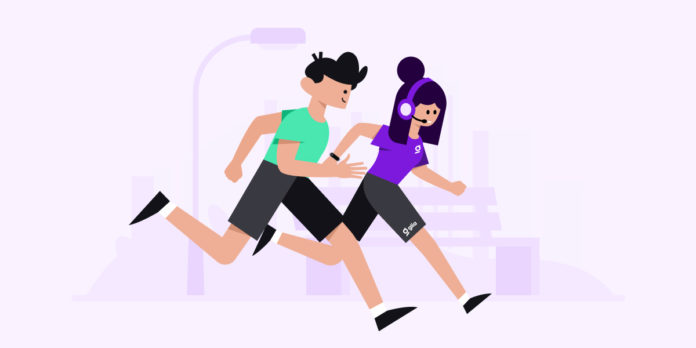Neglecting Customer Service is Like Running with Lead Shoes
As companies adjust and evolve with changing market demands, the behavior of their customers is evolving even quicker. Meeting customer expectations can feel like a race, one that companies never seem to be leading. But since “keeping up with expectations” is critical to customer success, a better understanding of the psychology of this evolution can be helpful as you strategize for the future of serving people in a digital-first world.
Author and motivational speaker Ty Bennett points to one sign of this upward trajectory of expectations–our updated interpretation of the concept of accessibility. “We live in an accessible world. Think about how easy it is to reach out to people and to contact them—even people who would have never been accessible before.”
Bennett goes on to say: “Even a decade ago, if you had a negative experience with a company, you could call Customer Service and demand to speak with a supervisor—as if ‘bucking my complaint up the chain’ would increase the urgency of getting a problem solved. But now If I want to reach out to the CEO of a company I can easily look up how to contact them, I can reach them through LinkedIn, and so I theoretically have direct access to anyone at any company. In our world today we’ve made it easier, and the world has become smaller. Because of that, we’ve psychologically embraced that speed and immediacy and have come to expect it from every company.”
John Goodman, the author of the National Rage Study says all you have to do is consider your own personal experiences with the “super-companies” that now dominate digital retail to see just how high our expectations have become. It’s a reconditioning that is sometimes called The A-to-Z Phenomenon, “A small number of companies have completely re-invented what great service feels like—and as always, Amazon and Zappos are the most frequently mentioned—and that kind of experience has now become the new standard, while the average company is perceived as having done a worse job.”
No one has studied the evolution of customer expectations more than Brad Cleveland. In 1997 he was one of the original partners in ICMI, the International Customer Management Institute, and served as CEO and President for the organization’s first 11 years. Since its inception, ICMI reports it has shared the collective wisdom of customer service and CX professionals from more than 50,000 organizations in 167 countries.
Says Cleveland, “The very definition of “be accessible” has changed dramatically. 10 years ago we were saying companies should be accessible, but now it means so many new channels and additional ways to contact them. For customers it means I expect you to treat me courteously. Know who I am. There’s this heightened level of customer expectation as a learned behavior.
We’ve all experienced organizations that do a good job of knowing who we are and personalizing service. When we have an experience where it doesn’t go well…somewhere down through the layers of how we’re processing all this…there’s less tolerance for companies that aren’t getting it right, now that we know what’s possible.”
He goes on to predict that without an overhaul of the underlying chassis of most Customer Service platforms, customers will likely suffer even more in the years ahead, “The desire for low-touch, no-touch experiences has only grown since the pandemic. There are so many things customers just want to do by themselves now. Why customers get upset—is when ‘I can’t do what I want to do, the way I want to do it. THEN, if I want to talk to a live agent it’s that much more complicated or inconvenient to have to make that transition.’”
Meeting Customers Where They Are
But, how do you deliver a better client experience and keep PACE with your customers? Offering customer accessibility and a smooth customer experience doesn’t have to be a heavy lift. Companies often believe that they need to have complicated systems to handle customer interactions. When, in fact, they can implement a ChannelLess™ solution that enables customers and representatives to seamlessly interact at their point of need. Digital Customer Service solutions can make your company more accessible to customers and help you offer an effortless customer experience.
Learn more about what it takes to create a 5-star customer experience in a digital-first world.





